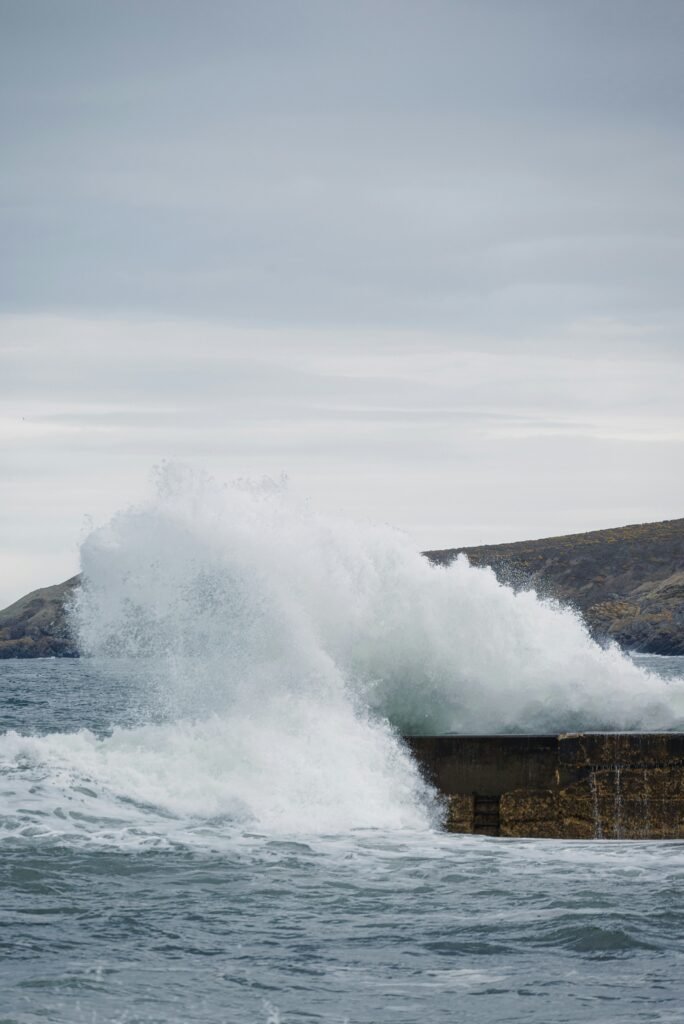Have you ever considered how facing discomfort could actually make you stronger? Cold plunging, or immersing your body in icy water, might seem like a form of torture, but it’s gaining traction as a method to enhance resilience through stress adaptation. Let’s unravel how this chilly experience can shape your mental and physical fortitude.

Understanding Cold Plunging
Cold plunging refers to submerging yourself in cold water, typically below 60°F (15°C). Whether it’s a brisk soak in a river, a dip in the ocean, or a plunge into a specially designed tub, this practice is becoming popular in wellness circles. If you’re picturing an Arctic swim, you’re on the right track!
The Science Behind Cold Exposure
Cold exposure triggers several physiological responses. When you’re immersed in cold water, your body goes through an immediate shock, prompting your nervous system to react. This response can enhance your capacity to deal with stressors in the future.
Your body releases a cocktail of hormones, including adrenaline and cortisol, which sharpen your focus and alertness. You’ll also discover that your body gets better at managing the cold over time—the more you practice, the easier it becomes. This is known as adaptation, and it’s one of the key benefits of cold plunging.
Immediate Effects on Your Body
When you first slip into cold water, you may feel like you’ve stepped into a shock zone. But hang on; that initial jolt is just your body awakening. Here’s what happens:
- Increased Circulation: Your heart rate initially spikes, pushing blood to your core to maintain your body temperature.
- Decreased Inflammation: Cold exposure can help reduce inflammation in your muscles and joints, promoting recovery.
- Enhanced Mood: Many people report feeling invigorated after cold plunging due to the rush of endorphins—a natural high, if you will.
These immediate responses are just the beginning. If you continue this practice, you’ll notice deeper changes over time.
Building Resilience
So, how does cold plunging lead to resilience? At its core, resilience is your ability to bounce back from adversity. Exposure to cold is a stressor, albeit a manageable one. By voluntarily facing discomfort, you train your body and mind to handle other life stresses more effectively.
The Role of Hormesis
Hormesis is a fascinating concept suggesting that exposure to low doses of stress can build resilience. Cold plunging is a prime example of this. When you expose yourself to cold water, you subject your body to a mild stressor. In response, your body activates its defense mechanisms, which ultimately improves your stress resilience:
- Strengthened Immune Response: Regular cold exposure can bolster your immune system, making you more robust against illnesses.
- Improved Stress Management: By training your body to handle cold exposure, you equip yourself with tools to manage everyday stressors better.
Mind Over Matter
The mental challenge posed by cold plunging is significant. The thought of stepping into chilly water can be daunting, yet overcoming that mental barrier can foster a sense of accomplishment. Each plunge teaches you to confront discomfort with a more resilient mindset.
- Building Mental Toughness: It’s not just about physical endurance; it’s about proving to yourself that you can overcome challenges. Each time you endure the cold, you’re training your mind to handle pressure.
- Emotional Benefits: The endorphin rush you experience can also lift your mood, making you feel more capable of tackling life’s challenges.
Long-Term Adaptation
The adaptation you experience through regular cold plunging can be profound—physically and mentally. Your body learns to navigate the discomfort, and over time, the process becomes more tolerable.
Physiological Changes
As you continue to expose yourself to cold, various physiological changes occur:
- Improved Circulatory System: Regular cold exposure enhances blood flow and circulation. This isn’t just beneficial for cold weather; it helps maintain a healthy heart year-round.
- Better Temperature Regulation: Over time, your body may become more adept at regulating its temperature, meaning you’ll find it easier to cope with temperature fluctuations in your daily life.
Psychological Shifts
The psychological shift can be just as remarkable as the physical one:
- Increased Confidence: Knowing you can handle the discomfort of cold plunging adds a layer of confidence that spills over into other areas of your life.
- Greater Mindfulness: Cold plunging encourages you to stay in the moment. That icy water demands your attention, helping you develop a deeper awareness of your body and emotions.
How to Get Started with Cold Plunging
Now that you’re vibing with the idea of cold plunging, how do you start? Taking the plunge doesn’t have to be a daunting leap—there are ways to ease into it.
Safety First
Before you dip your toes into the icy abyss, consider these safety tips:
- Consult a Professional: If you have medical conditions or concerns, it’s a good idea to talk to a healthcare professional before starting this practice.
- Start Small: Begin with shorter exposures, perhaps just a minute or two, and gradually increase as you become accustomed to the sensation.
- Go with a Friend: Having a buddy can make the experience more enjoyable and safer. Plus, sharing the discomfort can lead to laughter—what’s better than that?
Options for Cold Plunging
You don’t need a fancy cold plunge tub to experience the benefits. Here are some options for getting started:
| Method | Description |
|---|---|
| Cold Showers | Easily accessible; just turn down the temp. Perfect for beginners. |
| Ice Baths | Fill your bathtub with ice and water for a more intense experience. |
| Natural Bodies of Water | Lakes or oceans, especially in colder months, can do the trick. |
| Cold Plunge Tubs | Dedicated tubs specifically designed for cold exposure offer a controlled environment. |
Creating a Routine
Incorporating cold plunging into your routine can maximize its benefits:
- Start your day with a cold shower to wake you up immediately.
- Aim to practice cold plunging 2-3 times a week for optimal results.
- Track your progress—notice how your body and mood respond over time.

Integrating Cold Plunging into Your Life
Cold plunging isn’t just about the occasional dip; it can be woven into your lifestyle. Here are a few ways to keep it going:
Pairing with Other Wellness Practices
Consider integrating cold plunging with other wellness practices to amplify benefits:
- Breathing Techniques: Pair your plunge with mindful breathing. This can help you manage that initial shock when you first enter the water.
- Movement and Stretching: Following a cold plunge with some gentle stretching or movement can improve recovery and keep your muscles flexible.
Building a Community
Finding like-minded individuals can enhance your cold plunging experience:
- Join a Club: Look for local groups engaging in cold exposure. Sharing this experience with others can make it more fun and motivational.
- Social Media Groups: There are plenty of online communities dedicated to cold plunging where members share their experiences, tips, and inspiration.
The Bigger Picture: Stress Adaptation
While cold plunging is a fantastic way to enhance resilience, it’s essential to recognize that it’s just one piece of the stress adaptation puzzle.
Other Stress Management Techniques
To build overall resilience, consider incorporating a variety of stress management strategies:
- Mindfulness Practices: Meditation and mindfulness can enhance your ability to adapt to stress by promoting awareness and emotional regulation.
- Physical Activity: Regular workouts can also help your body cope with stress while boosting your mood.
- Balanced Nutrition: Eating a diet rich in whole foods supports your overall well-being and primes your body for stress.
The Importance of Rest
Rest is equally crucial in your journey toward resilience:
- Ensure you get enough sleep, as it allows your body to recover and strengthen.
- Incorporate rest days into your workout regimen to avoid burnout.

Conclusion
Cold plunging offers a unique blend of physical and psychological benefits that can enhance your resilience through stress adaptation. It challenges your body and mind, helping you to grow stronger with each icy encounter.
As you embark on your cold plunging journey, remember—it’s not just about enduring the cold. It’s about the growth, the confidence, and the newfound ability to tackle life’s challenges head-on. So why not take the plunge? Your future self might just thank you.

